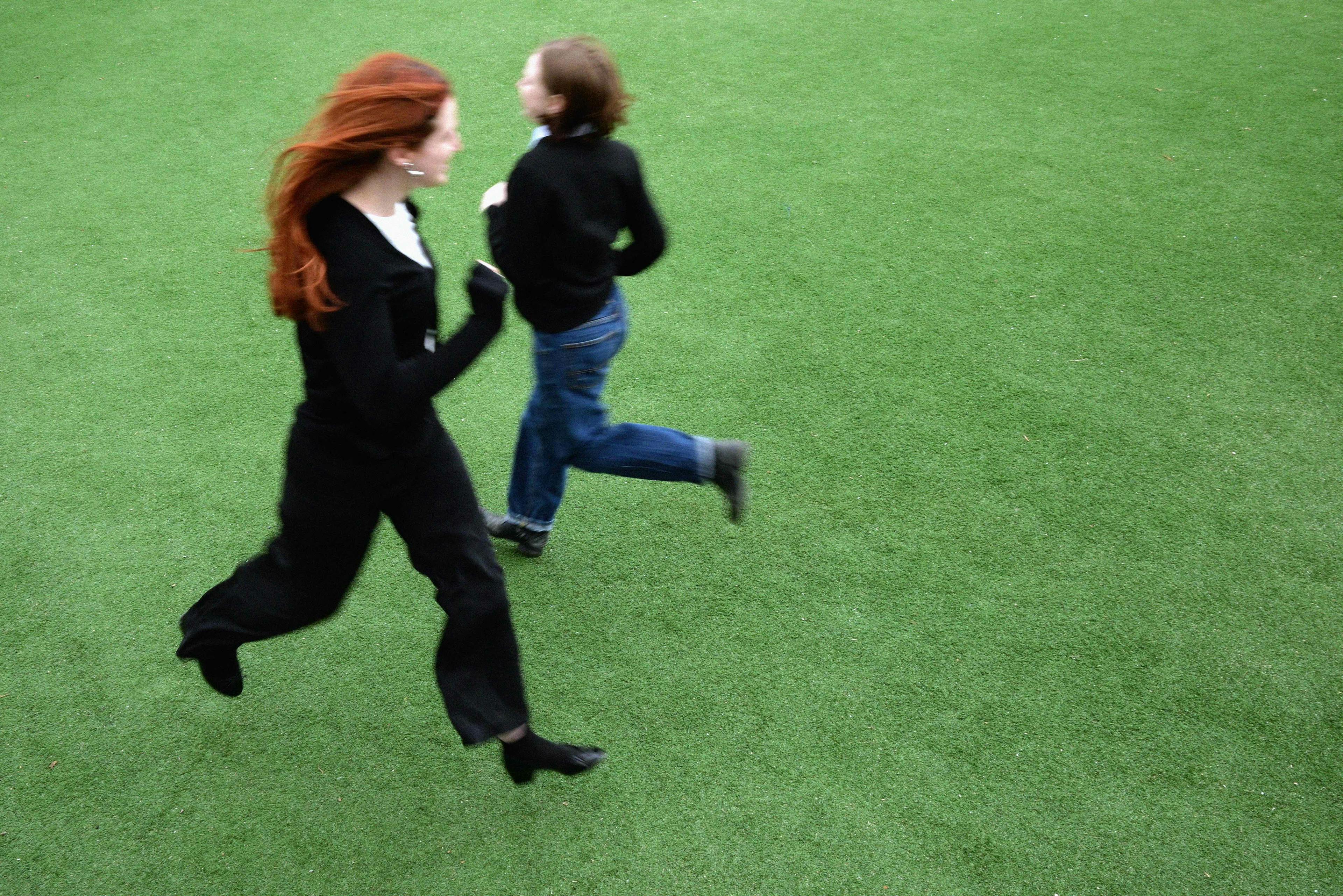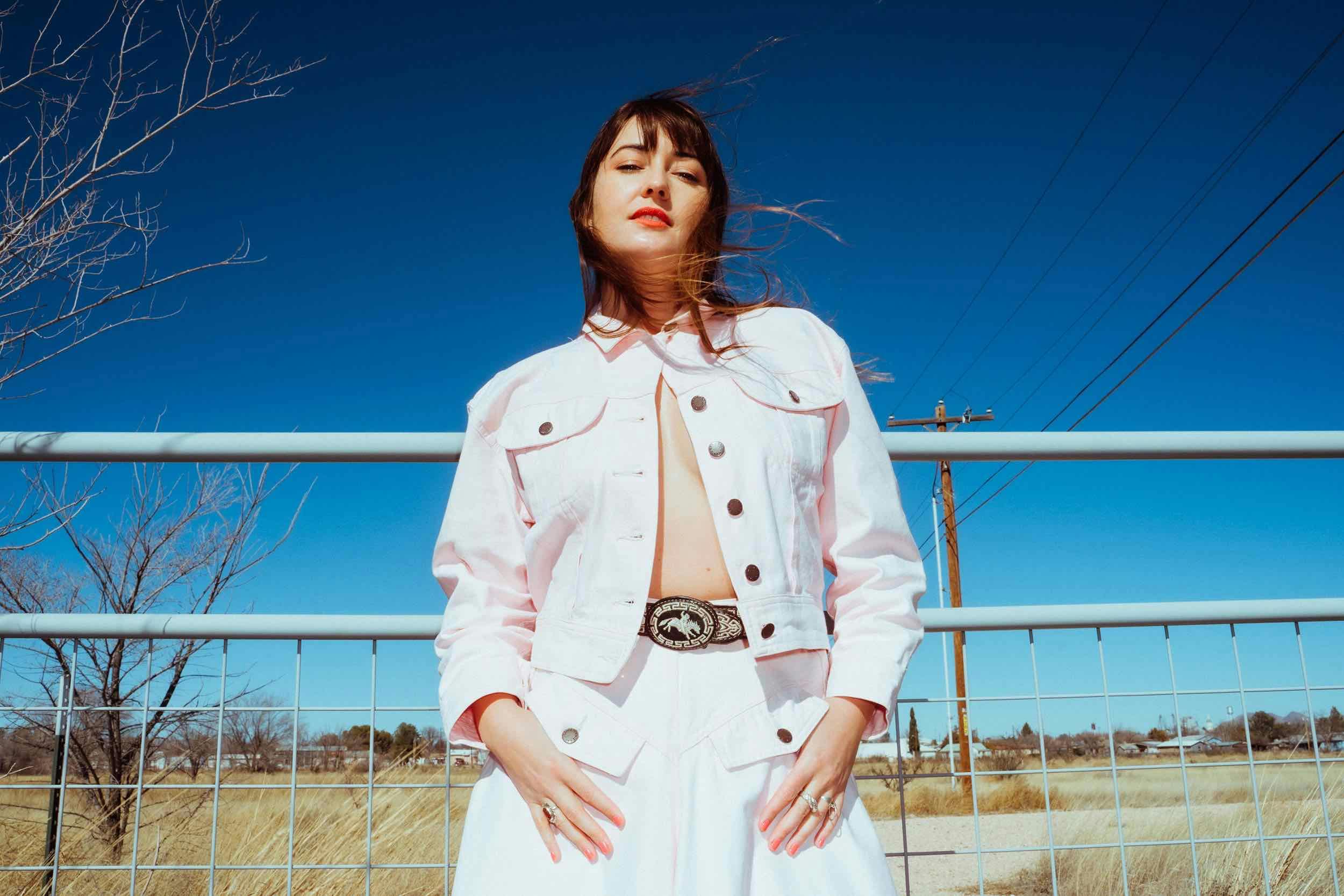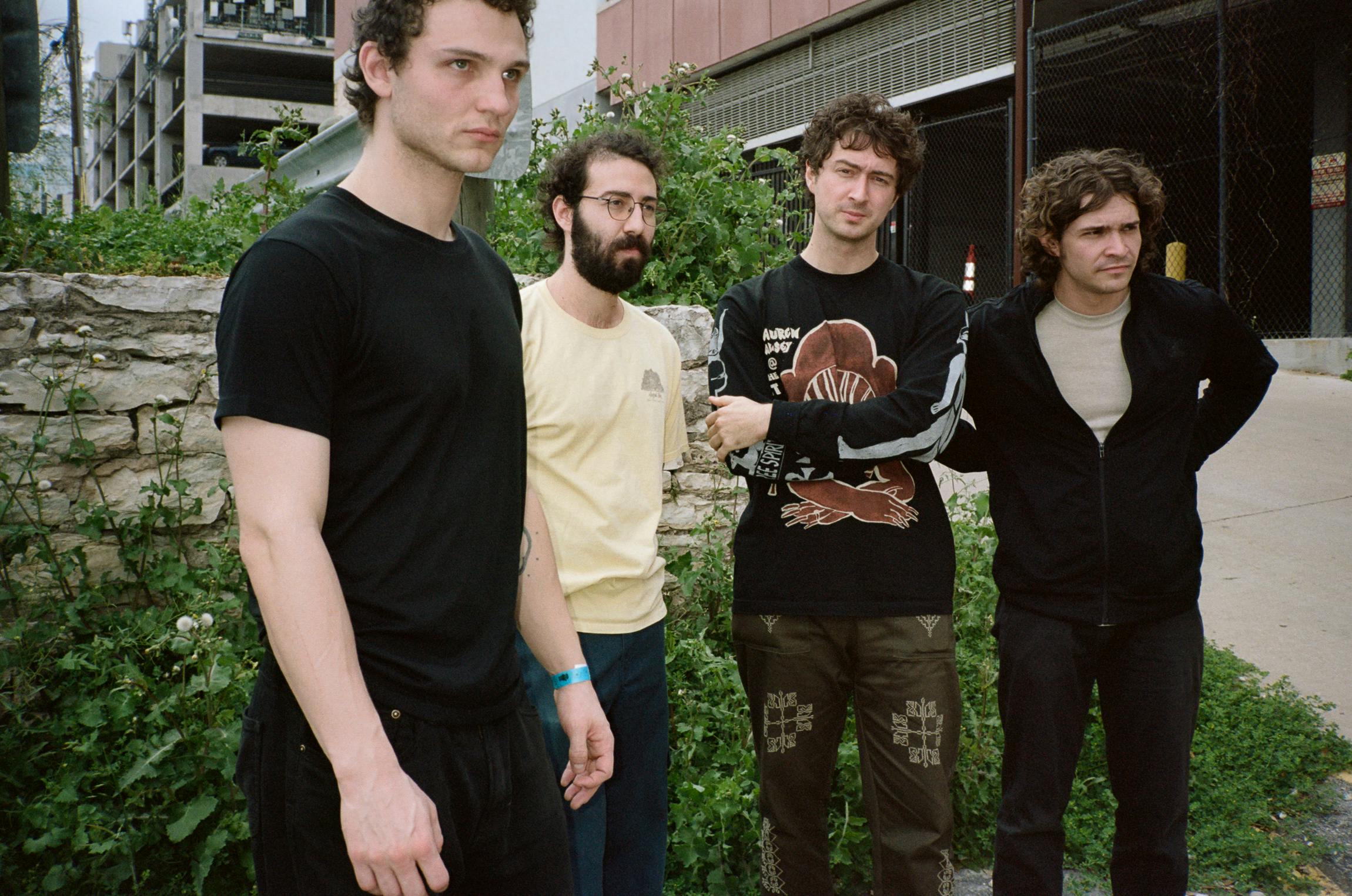On the heels of her new single, "Woke Up and No Feet," the singer and painter invites us into her studio to talk about her songwriting, the physicality of recording music, and straddling everything at once.
By Saoirse Bertram
Photos by Louisa Tantillo

Published
Grey-sky day in the city; I take the slow train to Brooklyn and wander through Fort Greene Park, a bright-eyed song playing through my headphones. It’s important to immerse yourself in the work of a great artist before encountering them, I believe, to steep into the same plane of being; and besides, I love the track. The song is “He is On His Way Home, We Don’t Live Together”; the artist I am to interview is the talented Anastasia Coope.
Her new album is imminent, but at this time, the first single contents me, imbuing the grey Brooklyn scene with a welcome brightness, sheltering me from the foul looks of the passers-by. The pedestrians all seem like they’re running late. I am too—hurriedly, I skip into the labyrinth of the Pratt campus and make my way to Coope’s studio, where her paintings recline and climb over the walls and floor, pleasantly charged and charming paintings, I think; like her music, they edify the space surrounding and make it something of their own.
Today, Anastasia Coope shares her second single “Woke Up and No Feet” off her forthcoming debut album, Darning Woman, out May 31, 2024 via Jagjaguwar.
On the new album and the creative process
Saoirse Bertram: Alright, here we go. Want to give me a rundown of the new record to get this rolling?
Anastasia Coope: Well, it's just a record that I recorded with myself — essentially during COVID, mid-COVID. I was just really bored; just making music; this combination made me make a lot of music. This is all the best stuff that happened.
SB: When you last put out that EP [the self-released Seemeely], that was like.. ‘21…was that recorded prior to COVID?
AC: Yeah, that was still COVID, but that was the very beginning. I feel like that was really my first venture into recording. I had never really recorded music before, but I really wanted to put something out because, again, I was so bored. [At the time] nobody was in the town where I grew up.
SB: [Seemeely is] a good record; I was listening to some of its songs recently. But it’s apparent that even if that one wasn’t recorded all that much earlier than the releases that follow, the newer songs tend to feel a lot more intricate. Like Crafted with a capital C, you can see the brushstrokes a little more.
AC: Yeah. I have gotten more intricate, I think…I don't spend that much time on almost anything, but I feel like I can spend time on music [with the songs on Darning Woman] I have spent time adding a lot of things.
SB: When you write these songs, are you enacting something that already exists in your head or is it completely new — an experience that you just walk into?
AC: I think that everything has always come from the same set of standards; I always want everything to look and feel and sound and be a really particular way. So, in that way, there's a lot that's premeditated, just in how I do anything. But normally, when I sit to write a song, there's no process of strumming and being like, “What sounds good?” — and there are never words that are prewritten; normally what I do is I just sit down and hit record, and I play something and then come up with the words as I go along. While there's the pressure of the song being recorded, I'm like, “I have to come up with the next word” — a stream of consciousness.
I would say most of the songs on the record contain the base recording of the song actually being written. And then I'm left with a really skeletal recording of me figuring this song out in real-time. And then I'll go back and just reinforce it by vocal layering — so I guess, yeah, the working process of this record was very much “it's happening now”; like, I'm not laboring over writing a few songs. At that time, I didn't even know how to labor over songwriting. It just had to happen, and then the labor happened more in composing around what I had written. Now I feel like I'm a little bit more standard in songwriting; “what sounds good”; going through multiple variations of everything.

On the merits and joys of music versus painting
AC: I think both things can be happening at once. Like I think that I like just being able to make proofs of things, whether they be songs or paintings, and I like just surrounding myself with an output of my own. I like proving to myself that I am the thoughts and opinions that I hold. So in that way, the music and the paintings are coming from this similar place, but I think when I'm painting… [Laughs] I don't like painting less, and I don’t know if I would say that I think more as a painter or musician, but there's something in music that allows for a more hyper-intense care and focus… Finished music feels more cemented in time; a recording feels more cemented in time than a finished painting.
SB: Do you feel that there’s maybe something a little more classically magical about the process of creating music?
AC: Yeah, I do. I've heard a lot of painters and artists speak to the point that there's something in music that can't be captured in painting, and I really believe that. I think that the same thought can go into both of them, and it can be, you know, equally as tangible, but I don't know. Creating a recording is much more spatial to me than painting. Painting is super flat. And I don't like sculpture.
On “He is On His Way Home, We Don’t Live Together”
AC: [This] song started as a collaboration between me and the person playing piano, Patrick Shiroishi; we were talking about doing a bunch of songs together, and I sent a list of things because I was thinking about; I think there was Bridget Fontaine and then some droney stuff; there was a playlist that I made, and I was just like, “do you want to try something?” And he sent me a few tracks.
And the piano one was very immediate for me because I had actually written that song beforehand. [Laughs.] I just disproved everything I just said. But I did write “He is On His Way Home” lyrically, I think, beforehand, and it had some similarities and like cadence and melodies [to the piano track]. And then I layered over it and I just kept going. I really like it when someone else sends me a loop or a really continuous piece of music that's really sparse if you will; I feel like it allows me to really go big in composing over it. And that's what I felt like happened there. And Matthew Rolin plays guitar over the end. It's kind of the best part of the song.
It’s a princess track. There are actually a couple princess songs on the record. On this one I was thinking about a really beautiful princess with really long hair like — not Rapunzel, but maybe a Rapunzel from a cooler country.
SB: [Laughs] Cooler than Germany? They’d be offended to hear.
A slight digression on the merits of various European states ensues.
AC: Cool Rapunzel! Rapunzel, but you know, Rapunzel x Chitty Chitty Bang Bang. That’s exactly what the song sounds like. The songs in Chitty Chitty Bang Bang are what I want all my music to sound like. I used to watch it every other day when I was a kid, and I would be so shocked by the plot—every time, I was like, “Wow!” It’s horrifying what happens to the kids in Chitty Bang Bang, but thank God that car can fly. That's really what saves them.
SB: Your music video for the track was lovely. It evoked for me that feeling of being young; playing in the woods in the summertime, and while you’re there, you almost have this idea of a future for yourself that you're on the cusp of reaching but just can’t quite grasp. And then when you become an adult, you still have that same feeling; only now it's in reverse, a nostalgia that’s as impossible to reach or comprehend as the previous dream. Sort of a timeless or out-of-time sensation.
AC: Yes, that’s exactly what I felt like as a kid, and that's exactly what I feel like now. As a kid, I was always in green pastures — my parents took me to a lot of meadows and farms, and you know, when they brought me to all the cool adult events in my town, I would always just be out there running in the field. And when I was doing so, I would always be like, “Yeah, when I'm older, I'll have my own field, and like, I'll have the chickens, and I'll be managing my own life, and it'll be good…” And now that I'm, you know, this age, it’s like, back when I was free to play as a child, that’s what was good. Timeless isn't quite the right word. But I feel like it gets thrown around a lot when I'm trying to explain myself. I just like things to feel so unattached from anything else: time-wise, location… And with that video, I felt like it was kind of able to achieve that.
SB: Yeah, I mean, there were parts of it that evoked an old-school fairy tale, and then there were other aspects that reminded me, maybe, of European coming-of-age movies from the 1970s and 1980s. But it’s not totally anachronistic either way. There’s a modernity, too, beyond trying to evoke a specific period and slapping a filter or whatever on it.
AC: I know, I hate that — it's hard to avoid, though, sometimes, when you're doing stuff like “I'm wearing an old dress in a field” and “it’s shot on film.” But yes, it's hard but I am always trying to get into a really narrow spot.
SB: Sitting on the windowsill without falling off.
AC: Being on the fence. You know how they say to get off the fence? I want to stay on the fence. Anastasia Coope: “Stay on the fence!” [Laughs] That’s how I feel.
On “Woke Up and No Feet”
AC: I think it's the earliest song on the album. And visualizing what was happening in my head with these lyrics was like, I think it was like about a painting that I did or something, and I'm really obsessed with making all of my characters be in hats or hoods — I still kind of do it; like, I hate hair. Like I just want everything to be like in a little cap. Yeah. And I think I painted a boy, and he had the hood on, and then his feet weren’t there… and so the lyrics are like, Wonder how hooded boy would be understood if he woke up with no feet…
It's totally the most pop song [on the record], which I like. I think it's really good structurally; I stand behind the way it builds. Chorally, it's really satisfying to me. The ending, as well, feels like it was the first time I did this sort of unraveling, which appears in a lot of my song structures now.
This interview has been edited and condensed for clarity.





